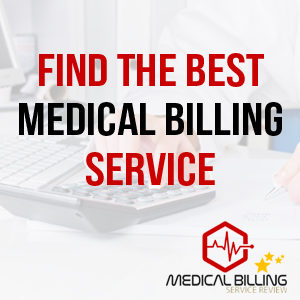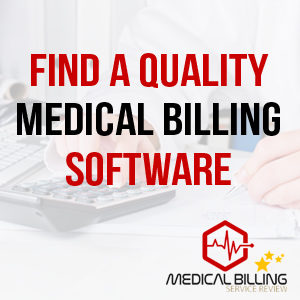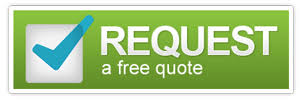
Top 10 Best Medical Billing Software in 2023
The medical industry is increasingly shifting towards digitization, and medical billing software has become an essential tool for healthcare providers. It simplifies the billing process, helps manage patient information, and assists with claims management. In this guide, we will review the top 10 best medical billing software available in 2023.
1. Athenahealth
Athenahealth is a cloud-based medical billing software suitable for small to large practices. It offers services such as electronic health records (EHR), patient engagement, and revenue cycle management. With its real-time updates and an extensive database of insurance rules, Athenahealth effectively reduces claim denials and speeds up the payment process.
2. AdvancedMD
AdvancedMD provides an all-in-one solution, including EHR, practice management, telemedicine, and patient experience management. Its medical billing feature helps automate tasks, track claims in real-time, and manage denials efficiently.
3. Kareo
Kareo’s medical billing software offers a user-friendly interface with customizable dashboards, making it a popular choice among healthcare professionals. It allows for seamless insurance verification, accurate charge capture, and efficient management of bill collections.
4. CareCloud
CareCloud provides a comprehensive suite of tools including EHR, practice management, and patient experience. Its medical billing feature comes with robust reporting capabilities that provide insightful analytics, helping practices optimize their revenue cycle management.
5. DrChrono
Designed for iPad, iPhone, and web, DrChrono offers a unique, user-friendly approach to medical billing software. It includes features like customizable medical forms, EHR, and a patient portal, along with efficient medical billing solutions.
6. NextGen Healthcare
NextGen Healthcare offers a range of services from EHR to revenue cycle management. Its medical billing software provides effective tools for claim scrubbing, denial tracking, and billing analytics.
7. Meditab
Meditab is an integrated, customizable software that caters to multiple specialties. Along with EHR and practice management, its medical billing feature offers accurate coding, batch billing, and an integrated clearinghouse, simplifying the billing process.
8. eClinicalWorks
eClinicalWorks offers cloud-based EHR, practice management, and medical billing solutions. Its RCM feature provides services like insurance verification, coding assistance, and detailed monthly reports to improve the overall billing process.
9. Greenway Health
Greenway Health’s medical billing software is suitable for practices of all sizes. It provides features like automated patient reminders, online bill payment, and real-time eligibility checking, aiding in streamlining the billing workflow.
10. Cerner PowerWorks
Cerner PowerWorks offers robust EHR solutions along with effective revenue cycle management. It assists in managing the entire patient accounting process, from claims submission to reimbursement.
While this guide provides a starting point in your search for the best medical billing software, it’s important to consider your specific practice needs, budget, and preferences when making a decision. Most providers offer a free trial or demo, so take advantage of these to get a better feel for the software. The right medical billing software can revolutionize your practice’s financial management, leading to more efficient operations and improved patient satisfaction.

What is Medical Billing Software?
Medical billing software is a computer application that automates the healthcare billing process. It’s essentially a tool used by healthcare providers to manage their invoicing to patients and insurance companies. Medical billing software helps streamline the process of sending invoices, reducing errors, and speeding up payment cycles. Let’s delve deeper into some of the common features and uses of medical billing software:
- Billing and Invoicing: Medical billing software automates the creation of invoices for the medical services provided. This includes detailed breakups of the procedures, costs, and the payable amount.
- Insurance Claims Management: The software is designed to work with various insurance companies and their claim filing processes. It helps manage and track the status of claims, ensuring that they are processed in a timely manner.
- Patient Scheduling and Registration: An integrated medical billing software also assists with appointment scheduling, helping to manage the calendars of healthcare professionals.
- Reporting: Most software programs come with built-in reporting capabilities. They can generate detailed reports about a practice’s financial health, outstanding claims, and more.
- Medical Coding: Medical billing software often includes coding tools or integrates with them. These are used to accurately record diagnoses and procedures in a format that insurance companies understand.
- Patient Records: In addition to billing, many software solutions also store patient records, helping healthcare providers manage patient information more effectively.
With the wide range of features offered by medical billing software, healthcare providers can improve the efficiency of their practice management, eliminate common billing errors, and enhance their interactions with patients and insurance companies. They provide an effective solution for managing the financial aspects of providing medical services while allowing healthcare professionals to focus more on patient care.
The Benefits of Medical Billing Software
In today’s fast-paced medical field, healthcare providers are continually looking for ways to increase efficiency, improve patient satisfaction, and boost revenue. One of the most effective ways to achieve these goals is through the use of medical billing software. Here are some of the notable benefits of implementing such software:
- Reduced Errors: Billing errors can be costly for both healthcare providers and patients. With automated processes and standardised data entry fields, medical billing software significantly reduces the risk of human error, ensuring that claims and invoices are correct the first time around.
- Increased Revenue: By streamlining the billing process, speeding up payment cycles, and reducing rejected claims due to errors, medical billing software contributes to increased revenue. It also helps in identifying unpaid invoices, late payments, and other outstanding claims that might otherwise go unnoticed.
- Improved Efficiency: The use of software means that much of the manual work related to billing is automated, saving significant time. This increase in efficiency allows medical staff to focus more on patient care rather than administrative tasks.
- Enhanced Patient Satisfaction: With clear, accurate billing and efficient processes, patients are more likely to have a positive experience. They can receive their invoices promptly, understand their payment obligations, and avoid disputes or confusion over billing errors.
- Better Reporting and Financial Management: Comprehensive reports generated by the software provide insights into the practice’s financial health, helping in informed decision making and strategic planning. It enables a thorough review of revenue, billable hours, patient demographics, and more.
- Regulatory Compliance: With constantly changing healthcare regulations, staying compliant can be a challenge. Medical billing software is regularly updated to comply with current industry standards and regulations, providing peace of mind to healthcare providers.
By reducing errors, enhancing efficiency, and streamlining the billing process, medical billing software plays a crucial role in helping medical practices and hospitals increase their revenue and focus more on providing quality healthcare services.
Understanding the Medical Billing Process and How Medical Billing Software Works
The medical billing process can be a complex journey that involves various steps – patient check-in, coding of services, charge entry, claim submission, insurance follow-up, and patient billing. An effective medical billing software can simplify and streamline these steps significantly.

Here’s a closer look at how the process works with a robust medical billing system:
- Patient Check-in: The process starts when a patient checks into a medical practice or hospital. The software verifies the patient’s insurance eligibility in real time, ensuring that the information is accurate and up to date. This step helps to prevent insurance claim denials due to incorrect or outdated insurance information.
- Coding of Services: Once the patient has been seen by the healthcare provider, the services provided are coded using standardized medical codes. The software makes this process efficient and accurate, with the help of built-in coding tools that reduce the likelihood of errors.
- Charge Entry: The coded services are then assigned specific charges based on the practice’s fee schedule. With medical billing software, this can be automated, which not only saves time but also ensures consistent and accurate billing.
- Claim Submission: The coded and priced claims are then submitted to the insurance companies. An efficient medical billing system can streamline this process by automatically submitting the claims electronically to the insurance companies, thereby speeding up the claim approval process.
- Insurance Follow-Up: One of the significant advantages of medical billing software is the ability to automatically track claims. It helps in identifying any denied or partially paid claims, allowing the practice to follow up and resolve these issues promptly.
- Patient Billing: After the insurance company has paid its portion, the software automatically generates an invoice for the patient’s portion of the bill. This automation ensures timely billing and improves the chances of collecting payment.
- Financial Reporting: Lastly, medical billing software provides comprehensive reports, giving valuable insights into the practice’s financial performance. These reports can help identify trends, monitor revenue cycle performance, and aid in strategic decision-making.
Medical billing software is a powerful tool that can help not only large hospitals but also small practices by streamlining their billing process, minimizing errors, improving patient satisfaction, and ultimately enhancing their bottom line. Its role in today’s healthcare industry is not just beneficial; it’s crucial.
Exploring EHR Software and its Relationship with Medical Billing Software
Electronic Health Record (EHR) software is a digital version of a patient’s paper chart, which is real-time, patient-centered, and can be accessed securely by authorized users. It contains the medical and treatment histories of patients, and EHR systems are designed to go beyond standard clinical data collected in a provider’s office, providing a broader view of a patient’s care.
Relationship between EHR and Medical Billing Software
EHR and medical billing software are distinct but interconnected systems within a healthcare setup. Let’s understand how they relate to each other:
- Data Exchange: EHR and medical billing systems need to communicate effectively with each other to exchange crucial patient data. Information like patient demographics, insurance details, and diagnosis codes entered into the EHR system are crucial for the medical billing process. Therefore, seamless integration between these two systems is often a key requirement.
- Improving Efficiency: When EHR and medical billing software work in sync, they can streamline the entire revenue cycle. Patient encounters documented in the EHR can be translated into medical codes, which are then used to create electronic claims in the medical billing system. This integrated workflow reduces manual data entry, minimizes errors, and speeds up the billing process.
- Patient Care and Satisfaction: While EHR software focuses on enhancing patient care by providing comprehensive and organized patient information, the medical billing software ensures the financial health of the practice. A streamlined process between the two systems can significantly improve patient satisfaction by making billing processes more transparent and efficient.
- Compliance: Both EHR and medical billing software need to comply with certain regulations like HIPAA for secure data exchange. Medical billing software often needs to pull out data from EHR for billing purposes, and this needs to be done in a compliant way to ensure patient data privacy.
- Reporting and Analytics: The connection between EHR and medical billing software also extends to reporting and analytics. By analyzing data from both systems, practices can gain meaningful insights into their clinical and financial performance. For instance, by tracking data from both systems, a practice can identify a correlation between specific health outcomes and reimbursement rates.
While EHR and medical billing software serve different purposes, their collaboration is essential for the seamless operation of a medical practice. This synergy not only helps in improving the quality of care provided to patients but also enhances the financial performance of the healthcare facility.

Advanced Features to Consider When Selecting a Medical Billing Software
When choosing the best medical billing software for your healthcare facility, you should consider several key advanced features that could significantly streamline your billing operations, improve accuracy, and enhance productivity. These advanced features make the medical billing software more than just a tool for invoicing; they transform it into a comprehensive solution that can adapt to your specific needs. Here are a few such features:
- Mobile App: A medical billing software solution that comes with a mobile app enables on-the-go access. With a mobile app, you can monitor real-time data, manage appointments, process payments, and even check insurance eligibility right from your smartphone.
- Ease of Use: The usability of the software is crucial. Even with all the advanced features, if the software is not user-friendly, your staff might find it challenging to use, leading to inefficiencies and errors. The software should have an intuitive interface and should be easy to navigate even for those who are not tech-savvy.
- Customer Support: Quality customer support is critical for any software solution. The provider should offer timely and competent support to resolve any issues you may face. Look for providers that offer multiple support channels like email, phone, and live chat.
- Specific Needs: Different medical practices have unique needs. Whether it’s specific to your specialization, your patient demographic, or the size of your practice, the software should be flexible enough to handle these specific requirements. Customizable workflows, templates, and reports can be particularly helpful.
- Cloud-Based Solution: A cloud-based medical billing software offers numerous advantages over traditional on-premise software. It eliminates the need for upfront hardware investments and ongoing maintenance. Data can be accessed from anywhere, anytime, which is especially useful in today’s remote working scenarios. Also, cloud-based software solutions are scalable to meet the growing needs of your practice.
In addition to these advanced features, it’s also important to consider factors like cost, data security, and integration capabilities with other systems like EHR or practice management software. The best medical billing software is the one that aligns with your practice’s workflow, enhances your team’s efficiency, and ultimately helps in improving your bottom line.
How Much Does Medical Billing Software Cost?
Investing in medical billing software can seem like a significant expenditure at first, but it’s important to consider it as an investment that can lead to significant savings in the long run. The cost of the software depends on several factors, including the features it offers, the number of users, whether it’s cloud-based or on-premise, and the level of customer support provided.
- Subscription-Based Pricing: Most cloud-based medical billing software solutions follow a subscription-based pricing model. These can range anywhere from $50 to $500 per user per month. The cost generally includes access to all features, regular updates, data storage, and customer support.
- Perpetual Licensing: For on-premise solutions, the pricing model is usually based on a one-time perpetual license fee. The cost for such software can range between $1,000 to $25,000. While this seems like a larger upfront cost, remember that you won’t have to pay monthly subscription fees.
- Other Costs: There may also be additional costs for implementation, training, and maintenance, especially for on-premise solutions. Some vendors may also charge for extra features or integrations.
Compared to the cost of hiring a medical billing service, which can take anywhere between 5% to 10% of your practice’s monthly revenue, investing in medical billing software can result in considerable savings over time. Not only do you have more control over your billing process, but you also reduce the risks of errors that can lead to claim denials or underpayments.
However, cost should not be the only factor when choosing a medical billing solution. Consider the return on investment it can bring in terms of improved efficiency, fewer claim denials, better financial management, and increased patient satisfaction. Remember that the right software solution should cater to your specific needs and help you streamline your billing processes for maximum productivity.

Simplifying Claims Submissions, Insurance Billing, and Clinical Notes with Medical Billing Software
One of the key advantages of a robust medical billing software is its ability to simplify crucial healthcare processes such as claims submissions, insurance billing, and management of clinical notes.
- Claims Submissions: Medical billing software often integrates features that allow for seamless electronic submission of claims to insurance companies. Some solutions come with preloaded databases of insurance payer IDs and electronic payer lists, significantly reducing the time spent looking up and manually entering this information. Also, many software platforms can automatically check claims for errors before submission, reducing the chance of claim denials and rejections.
- Insurance Billing: Managing insurance billing can be a complex task, especially when dealing with different insurance policies, coverage levels, and payer requirements. With medical billing software, this process is made easier. The software can automatically update changes in insurance policies, verify patient insurance eligibility in real-time, and accurately calculate patient responsibility for each visit. This reduces the chances of billing errors and ensures a smoother billing process.
- Clinical Notes: Clinical notes are an important part of a patient’s medical records and play a significant role in the billing process. They contain information about a patient’s health status, treatment plans, and the services provided during each visit. Medical billing software can integrate with EHR (Electronic Health Record) systems, allowing for a seamless transition of information from clinical notes to billing. This ensures that all billable services are accurately captured and billed, reducing the chances of missed or under-billed services.
Investing in medical billing software that streamlines these processes can greatly enhance the efficiency of your practice, ensuring better financial performance and patient satisfaction. These capabilities underscore the significance of adopting a robust and reliable medical billing system for your healthcare organization.
Integration with Practice Management Systems
An aspect of medical billing software that is vital to consider is its ability to integrate seamlessly with practice management systems. Comprehensive medical billing software should work in harmony with your existing setup and streamline all aspects of practice management.
- Appointment Scheduling: Many medical billing systems can fully integrate with your calendar or scheduling tool. This allows for real-time updates of patient appointments and ensures that all billable appointments are accurately captured in the billing system.
- Patient Demographics: The software should be able to extract and utilize patient demographics from your practice management system. This includes patient contact details, insurance information, and medical history. Accurate patient data is key to avoiding billing errors and denials from insurance companies.
- Reporting: Robust medical billing software should provide robust reporting tools. These tools can generate financial and administrative reports that provide insights into your practice’s performance. They can help identify trends, track revenue, monitor insurance reimbursements, and even forecast future income based on current data.
Customer Support and Training
Another factor that is just as crucial is the level of customer support and training provided by the software vendor. This is especially important if your staff isn’t tech-savvy or if your practice has specific workflows that need to be accommodated by the software.
- Customer Support: Look for a vendor that provides responsive and knowledgeable customer support. Whether it’s through email, phone, or live chat, getting quick and helpful responses to your questions or issues can be invaluable.
- Training: Comprehensive training on how to use the software effectively should be a part of your package. The best vendors will offer a mix of online and in-person training and will have extensive resources available, such as video tutorials and user guides.
Staying Compliant with Medical Billing Software
Lastly, it’s crucial to ensure that the medical billing software you choose helps you stay compliant with all relevant regulations and standards. Whether it’s following HIPAA guidelines, meeting ICD-10 coding requirements, or ensuring the secure handling of patient data, your medical billing software should aid in these efforts and not become a hindrance.
- HIPAA Compliance: The software should ensure that all patient data is stored and transmitted securely in accordance with HIPAA regulations. It should also provide an audit trail, so you can prove compliance if necessary.
- ICD-10 Coding: With medical coding becoming increasingly complex, your software should be able to support the latest coding standards, including ICD-10. It should also update regularly to accommodate changes in coding practices and guidelines.
By taking all these factors into account, you can make an informed decision when choosing medical billing software. Remember, the goal is to make your practice more efficient, increase revenue, and deliver a better patient experience. The right medical billing software will help you achieve all these objectives.
Streamlining Practice Efficiency with Medical Billing Software
Efficient operation is a cornerstone of any successful medical practice. Medical billing software plays a key role in streamlining these operations, reducing administrative workload, and enabling practitioners to focus more on their patients. Here are a few ways how the right medical billing software can boost your practice’s efficiency:
- Automating Routine Tasks: By automating time-consuming tasks such as claim submission, payment posting, and follow-ups on unpaid bills, medical billing software frees up valuable time for your staff to focus on more important responsibilities.
- Reducing Billing Errors: Billing errors can lead to claim denials and delayed reimbursements. Good medical billing software will have built-in error checking mechanisms that catch common billing mistakes before the claims are submitted.
- Enhancing Patient Communication: Many medical billing software solutions offer patient portals where patients can check their billing details, pay online, and communicate with the practice. This not only improves patient satisfaction but also reduces the workload of the front office staff.
- Generating Financial Reports: These reports offer valuable insights into the financial health of your practice. They help identify revenue trends, evaluate payer performance, and monitor the effectiveness of your collection efforts.

The Future of Medical Billing Software
As we look towards the future, medical billing software will continue to evolve, bringing more features, better integration, and advanced technologies.
- Artificial Intelligence and Machine Learning: These technologies are already being incorporated into medical billing software, helping to predict claim denials, automate coding, and improve revenue cycle management.
- Telemedicine Integration: As telemedicine continues to grow, expect to see more medical billing software offering integrated telehealth solutions. This will simplify billing for virtual visits and ensure that telehealth services are reimbursed correctly.
- Interoperability: With the push for more interoperability in healthcare, future medical billing software will likely offer better integration with EHRs, practice management systems, and other health IT solutions.
Investing in the right medical billing software can truly transform the way your medical practice operates. It’s an investment that can pay significant dividends in terms of reduced workload, fewer errors, increased revenue, and improved patient satisfaction. However, it’s essential to conduct thorough research and choose a solution that fits the unique needs of your practice. As the medical billing landscape continues to evolve, the software you choose today should be flexible enough to adapt and grow with your practice in the future.
Author: Mike Cynar
Mike Cynar brings buyers and sellers together by producing reviews and creating non biased webpages allowing users to share their experiences on various products and services. He and his staff write informative articles related to the medical field, legal, and other small business industries.

Leave a Reply